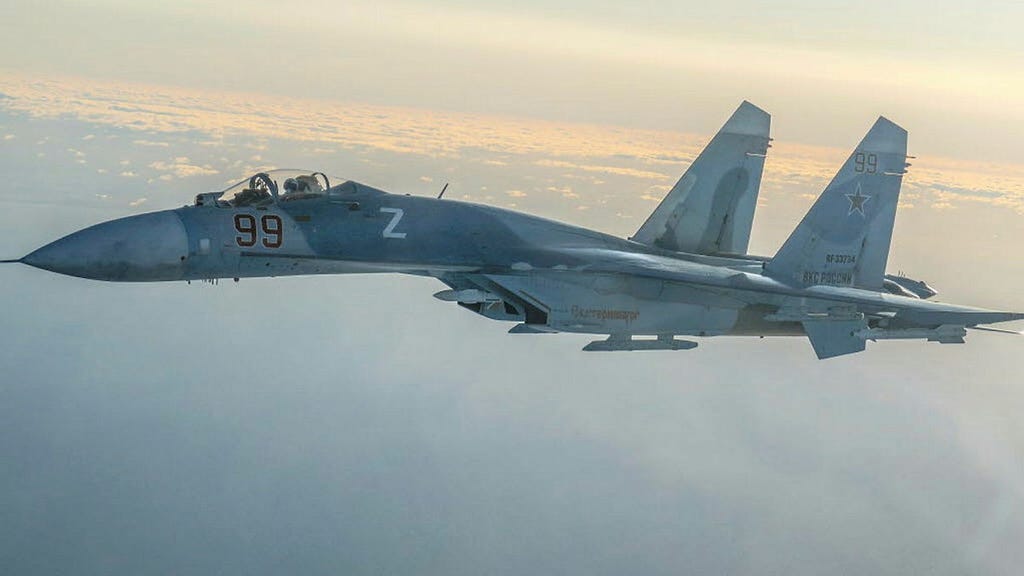Paragraph 1: The Incident
Russian Tu-22 Backfire bombers, escorted by two Su-27 Flanker fighter jets, were identified flying over the Baltic Sea. This prompted a response from multiple nations. Finnish F-18 Hornets were the first to intercept the Russian aircraft over the Gulf of Finland. They were then relieved by Dutch F-35 Lightning II fighters operating as part of NATO’s Air Policing mission. Finally, Swedish fighter jets took over monitoring the Russian bombers as they continued their flight in international airspace east of Gotland. The Swedish Armed Forces documented the encounter with photographs showing the Russian bombers and their fighter escorts.
Paragraph 2: The Swedish Response
Dennis Hedström, Chief of the Swedish Air Force, confirmed that Swedish fighters were scrambled to identify and visually verify the Russian aircraft. While unable to disclose the exact proximity of the Russian planes to Swedish territory, Hedström emphasized that the flight took place within international airspace “adjacent to Swedish territory.” The primary objective of the Swedish interception was to demonstrate awareness and readiness to respond to any potential escalation. The presence of Swedish fighters served as a deterrent, communicating a clear message to the Russian aircraft: "We see you, we are prepared, and do not escalate the situation."
Paragraph 3: Deterrence and Signaling
The Swedish Air Force’s decision to intercept the Russian bombers underscores the importance of maintaining a credible defense posture and demonstrating a commitment to territorial integrity. By launching their fighters, Sweden sent a powerful signal of resolve, both to Russia and to its allies. This act of "showing the flag" reinforced the message that any encroachment on Swedish airspace or any aggressive action would be met with a swift and decisive response. The intercept served as a tangible demonstration of Sweden’s commitment to its own defense and to the collective security of the region.
Paragraph 4: Routine Occurrences and International Airspace
While the interception of Russian aircraft may seem alarming, Hedström emphasized that such flights are not uncommon in the Baltic Sea region. Both Russian and Swedish aircraft operate regularly in international airspace, often following established flight profiles. The Swedish Armed Forces maintain continuous surveillance of the Baltic Sea, meticulously monitoring air traffic and observing patterns. These flights occur with varying frequency, sometimes multiple times a day, and other times with lulls of a week or more. Hedström reassured the public that these activities are routine and subject to constant monitoring by the Swedish military. The incident, while prompting a response, did not constitute a violation of Swedish airspace.
Paragraph 5: Interception Protocols and Coordination
The decision to scramble Swedish fighters was a deliberate one, based on the proximity of the Russian aircraft to Swedish territory. Hedström explained that not every instance of Russian air activity necessitates a Swedish response. Sometimes, other NATO allies, such as the Netherlands in this case, take the lead in monitoring and intercepting Russian aircraft. However, in this particular instance, Sweden opted to engage its own fighters due to the perceived proximity to its national borders. This underscores the cooperative nature of airspace monitoring and interception procedures within the NATO framework, allowing nations to share responsibilities and coordinate responses.
Paragraph 6: Communication and De-escalation
While visual contact was established between the Swedish and Russian aircraft, it remained unclear whether direct communication took place between the two air forces following the interception. Hedström acknowledged the possibility of communication but could not confirm it. The visual interaction itself, however, served as a form of communication. The presence of the Swedish fighters conveyed a message of awareness, readiness, and a commitment to de-escalation. This tacit communication, combined with the established protocols for intercepting aircraft, likely contributed to a peaceful resolution of the incident, preventing any further escalation or misunderstanding. The incident underscores the importance of maintaining clear communication channels and established procedures to manage interactions in contested airspace and ensure regional stability.














